Believe it or not, I’ve never attempted this kind of a shot before. Maybe because I thought it was too cliché; maybe because I grew up in Southern California where we never really had clear enough skies. But whatever the reason, the first time I tried it was last week, while on a family vacation in Kauai, Hawaii.
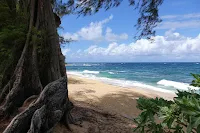 Back in the days of film, this kind of a shot was straightforward: Put your camera on a tripod, set the shutter speed to “B”, use a locking cable release and keep your shutter open for an hour or two. Not so with digital. Leaving your shutter open for so long will develop so much noise that people looking at it would cringe.
Back in the days of film, this kind of a shot was straightforward: Put your camera on a tripod, set the shutter speed to “B”, use a locking cable release and keep your shutter open for an hour or two. Not so with digital. Leaving your shutter open for so long will develop so much noise that people looking at it would cringe.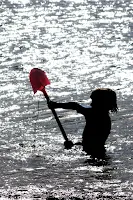 For digital, we have to borrow from the techniques developed by astrophotographers – take a lot of shorter exposures and merge them all on your computer. For this image, I took about 90 pictures at 30 seconds each, ISO 1000, at f/2.8. Then I merged them on my computer using a great, free program called StarStaX (www.StarStax.net).
For digital, we have to borrow from the techniques developed by astrophotographers – take a lot of shorter exposures and merge them all on your computer. For this image, I took about 90 pictures at 30 seconds each, ISO 1000, at f/2.8. Then I merged them on my computer using a great, free program called StarStaX (www.StarStax.net).Because this was a family vacation, I brought one of the best cameras ever designed for family vacations: The new RX-10 II. (You probably haven’t heard much about it because the whole world is going GaGa right now about the Sony A7r II.) I also took the RX-100 IV, which is essentially the same camera but without the longer-reaching lens. I’ll post some other vacation shots I took with these cameras throughout this blog post to keep you from getting bored.
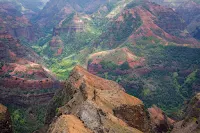 The first challenge to overcome was that of framing and focusing the shot using an EVF. To get shots like these you have to be in a place that is extremely dark – so dark that, even when amplified, your Live View image looks black. How is one supposed to focus and compose under these conditions?
The first challenge to overcome was that of framing and focusing the shot using an EVF. To get shots like these you have to be in a place that is extremely dark – so dark that, even when amplified, your Live View image looks black. How is one supposed to focus and compose under these conditions?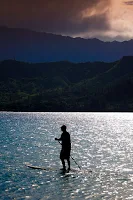 Short answer: For focusing, I set the focus mode to Manual Focus and set the focus distance to infinity. For composition, I had to guess. I pointed the camera in about the right direction and took a test shot. Then I had to manually adjust the focusing a little bit, because apparently “infinity” means “a little further out than infinity”. (Lots of lenses behave this way intentionally, to allow them to fully function when thermal expansion happens.)
Short answer: For focusing, I set the focus mode to Manual Focus and set the focus distance to infinity. For composition, I had to guess. I pointed the camera in about the right direction and took a test shot. Then I had to manually adjust the focusing a little bit, because apparently “infinity” means “a little further out than infinity”. (Lots of lenses behave this way intentionally, to allow them to fully function when thermal expansion happens.)With the shot composed the way I wanted, I used a RM-VPR1 wired cable release, set the camera to continuous shooting, and locked the cable release in the “down” position for about 45 minutes.
Then the fun part commenced. Because I knew noise would be a concern, I shot in RAW, and reduced the noise on all of the images using Lightroom. Then I took the resulting .jpgs and ran them through an easy to use program called StarStax.
 |
| The StartStaX user interface |
With StarStax, you just drag all the images you want to merge into the left panel, and hit EDIT --> Start Processing, and wait. (There are more options and controls, but for this image they weren’t needed.) I then took the final product, did a slight curves adjustment in Photoshop, lightened the palm tree a little, and that was it!
 I know what some of you are going to say: “Gary, I’ve been reading that Sony uses a compressed RAW format whose artifacts can show themselves under precisely these conditions. Weren’t you gnashing your teeth in anguish about this issue?”
I know what some of you are going to say: “Gary, I’ve been reading that Sony uses a compressed RAW format whose artifacts can show themselves under precisely these conditions. Weren’t you gnashing your teeth in anguish about this issue?”The answer is no. I consider this an art image, and if there are compression artifacts visible around the bright-to-dark transitions, I sure wasn't able to see them. On the other hand, I'm not an astrophotographer doing this for scientific purposes. If I was, I'd probably be more concerned.
But there is a question that threw me initially: I had expected all of the star trails to form concentric circles around Polaris, the North Star (out-of-frame, to the right in the image). This does indeed happen on the right half of the image, but as you look from right to left you see the stars' paths look straighter. Here's the image again:
What's going on? I put out the question on Facebook, and sure enough, David Kilpatrick (renown photo magazine publisher, including Cameracraft) provided the necessary insight:
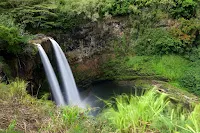
"You're inside a big sphere, in effect, and the stars which make straight lines are directly overhead (moving like the sun does at the equator, if you aim your camera exactly east or west - from horizon to horizon straight over the top). The stars to your left and right will appear to make ever tighter circle until any star perfectly aligned with the earth's axis (Pole Star for north? more or less) will not move at all and will record as a point. But you have to be able to see that to record it. Not sure about Hawaii. In Scotland it's easy enough to put the Pole star centre shot and get complete circles. Close to the equator it is probably below the horizon or just above it."
I've said this before, and I'll say it again: That man is a fountain of knowledge.
And now, a word from our sponsor
Even though you can now enjoy the seminars from the comfort of your home, I'm still doing live seminars, because hey, nothing beats learning in person. The last 4 live seminars of the year are below. Have you reserved your seat yet?
Tacoma, Washington September 26-27, 2015
New Zealand Oct. 31 - Nov. 1
Sydney, Australia November 14-15
Melbourne, Australia November 21-22
Ebooks in the Pipeline
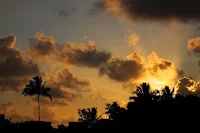 Sony RX-100 IV and RX-10 II (one book, two essentially identical cameras)
Sony RX-100 IV and RX-10 II (one book, two essentially identical cameras)Sony A7r II
Tony Philips continues to work on the Fujifilm X100T ebook. It's taking longer because he had some personal setbacks.
As always, send me an email to Gary at Friedman Archives dot com if you'd like to be notified of their release.
 |
| RX-100 IV, 20s, f/1.8, ISO 1250. Slight curves applied to increase contrast but that's it. You can't take a picture like this in Los Angeles. |
 |
| Another result using different settings: A7R II, 28mm lens, 20s f/3.5, ISO 400. 151 images merged using StarStaX. |
That's it for now! Until next time...
Yours Truly, Gary Friedman





The question about Sony's lossy RAW format is always amusing (but annoying!). I use a Sony A7S & A7R, both full spectrum modified, and an unmodded A7R II for astro/nightscape photography. They all work wonderfully and I have yet to see the "dreaded" problem with Sony proprietary RAW file compression!
ReplyDeleteYou can see some of my star trails, Auroras, etc. at:
https://plus.google.com/photos/116260312230579398213/albums/5526561973500317537.
I also use the above three cameras as well as the A7 II for many other types of photography. Excellent cameras!
I am a little skeptical about the need to use RAW. I have done a numbver of star trails using JPG without problem. My view is that noise is essentially random and StarTrax is effectively integrating around 100 images so this should remove noise effects.
ReplyDeleteI use an app called Triggertrap on an old iPod Touch to control the camera and allow five seconds betrween exposures for the sensor to cool down a little.
I agree with the statements about setting up the camera. Find your background whilst it is still light. I have been known to set up the camera in the light then unclip it from the tripod and leave the tripod in position until dark. I would agree however that most of the time this level of control is not possible!
Not related to this, but remembered again (plus sonyalpharumors.com didn't have anything on this): Has there been any news about A7sII ? I like my A99 but would want to get something lighter with good evening performance for travelling.
ReplyDeleteGreat post! Brought back memories from my film days using the "B" setting. Thanks much for telling how do it with digital!
ReplyDeletePS can't wait to try the Spam flavored macadamia nuts! :-)
Very good post. I have been taking mu RX100 on vacation for sometime. Started with the RX100 and now up to the IV. About 6 months ago I added the RX10 to along with the RX100 and RX1. These are the only three cameras I take on vacation. I also take one or more of these to social events. These cameras are great. Can't wait for the book.
ReplyDeleteI've been away for awhile and am just catching up on my email, so I'm late to the conversation here. By coincidence, however, I was checking out the infinity focus position of my RX10 Mod I camera today. The RX10 has been my main travel camera for a long time; it never disappoints. As you reported here, and as I already knew but wanted to reconfirm for myself, the infinity focus position is not right at the infinity mark on the distance scale but a tad shy of it. The focus at precisely the infinity mark is actually quite poor, so it makes a big difference. This point is relevant not only for nighttime astrophotography but for other common shooting situations as well, e.g., for taking pictures of fireworks or a solar eclipse.
ReplyDeleteAs for your straight startrails, to find the Pole Star (Polaris) in Hawaii you needed to look directly North at a position 20 degrees above the horizon, which is the geographical latitude of Hawaii. Depending on where you were shooting from on Kauai, either from the south coast (Poipu) or the north coast (Princeville) of the island, a clear view of Polaris so close to the horizon can be blocked by mountains or by distant clouds.